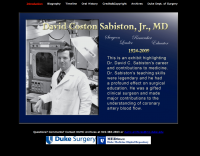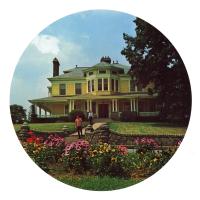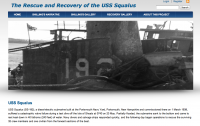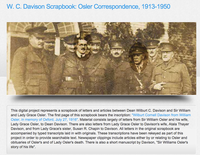Online Exhibits

Agents of Change: Portraits of Activism in the History of Duke Health
Agents of Change: Portraits of Activism in the History of Duke Health is a 2023-2024 oral history project documenting the work of activists and "change agents" throughout Duke's history. As Duke approaches its centennial and engages in a university-wide project to illuminate its past and set goals for the future, what voices are being silenced and what stories are being left out?

David Coston Sabiston, Jr., MD
This exhibit highlights Dr. David C. Sabiston's career and contributions to medicine. Dr. Sabiston's teaching skills were legendary and he had a profound effect on surgical education. He was a gifted clinical surgeon and made major contributions to the understanding of coronary artery blood flow.

Duke Poison Control Center: A Retrospective Exhibit
This exhibit highlights the Duke Poison Control Center (1954-1995) which has had a profound impact on the field locally and nationally. From the design of the safety cap to community outreach and education, the Duke Center has always been at the forefront of poison prevention and safety issues.

Faces of Duke Health
Faces of Duke Health celebrates the diverse roles that contribute to the Duke Health community. This ongoing exhibit series highlights the often-overlooked departments and variety of roles and expertise essential to the daily operations of a health system.

Highland Hospital: Portrait of 20th Century Mental Health Care
Highland Hospital: Portrait of 20th Century Mental Health Care documents the management, patient care, and educational programs of a residential psychiatric hospital located in Asheville, North Carolina. Drawing from the Duke University Medical Center Archives collections, the exhibit features photographs, administrative documents, promotional brochures, and newspaper clippings from the hospital’s history.

Improving Patient Care by Capturing Computerized data
This online exhibit documents the Duke Databank for Cardiovascular Disease. The databank itself was created through the vision of Dr. Eugene Stead, chair of the Duke Department of Medicine from 1946 to 1967. When the Department of Medicine received a MIRU [myocardial infarction research unit] grant to place a computer on the CCU [cardiac care unit] to monitor cardiology patients, it soon became clear that the nurses on the CCU were more valuable to the project than the computer. Dr. Stead, however, still saw the worth of computers in medicine, and foresaw that they could become an intricate part of patient care. His vision was that the computer be used hospital-wide as a "computerized textbook of medicine," replacing a doctor's fallible memory of how to treat a condition or disease with a computer's infallible memory of each patient treated in the hospital.

Joining a Community of Care: Duke Midwifery Service
This exhibit documents the history of the Duke Midwifery Service and highlights the unique stories from nurse midwives and other birth workers in Durham, North Carolina. The foundation of this exhibit is oral history interviews that provide first-hand accounts of the history of the DMS, social and institutional relationships between Duke and Durham, and maternal health.

Remembering the 65th: Duke's General Hospital Unit
Remembering the 65th: Duke's General Hospital Unit documents the staff, activities, and accomplishments of Duke's World War II hospital unit. Drawing from the Duke University Medical Center Archives collections, the exhibit features photographs, artwork, documents, and scrapbooks created by the individuals involved with the unit.

Rescue and Recovery of the USS Squalus
This exhibit documents the rescue and recovery attempts undertaken after the sinking of the USS Squalus on May 23, 1939. Items digitized in this exhibition are taken from materials donated to the Duke Medical Center Library & Archives by the family of Dr. Charles W. Shilling. The items are divided into 2 sections: I. Images used by Dr. Shilling during his numerous talks and speeches regarding the rescue and recovery of the USS Squalus and images documenting the recovery of the USS Squalus prior to towing to the Portsmouth Navy Yard, and II. Articles and a firsthand narrative of the rescue of the 33 survivors provided by Dr. Shilling.

W. C. Davison Scrapbook: Osler Correspondence, 1913-1950
This digital project represents a scrapbook of letters and articles between Dean Wilburt C. Davison and Sir William and Lady Grace Osler. The first page of this scrapbook bears the inscription: "Wilburt Cornell Davison from William Osler, in memory of Oxford, July 27, 1916". Material consists largely of letters from Sir William Osler and his wife, Lady Grace Osler, to Dean Davison. There are also letters from Lady Grace Osler to Davison's wife, Atala Thayer Davison, and from Lady Grace's sister, Susan R. Chapin to Davison. All letters in the original scrapbook are accompanied by typed transcripts laid in with originals. These transcriptions have been rekeyed as part of this project in order to provide searchable text. Newspaper clippings include articles either by or relating to Osler and obituaries of Osler's and of Lady Osler's death. There is also a short manuscript by Davison, "Sir Williams Osler's story of his life".
